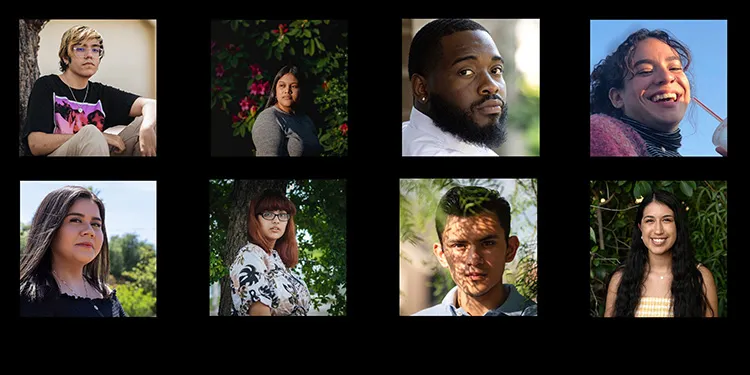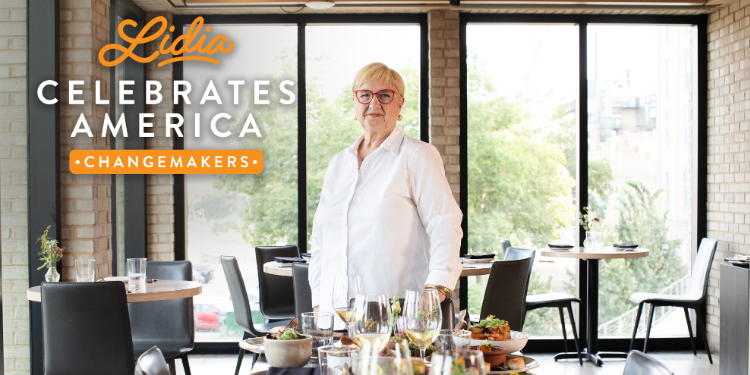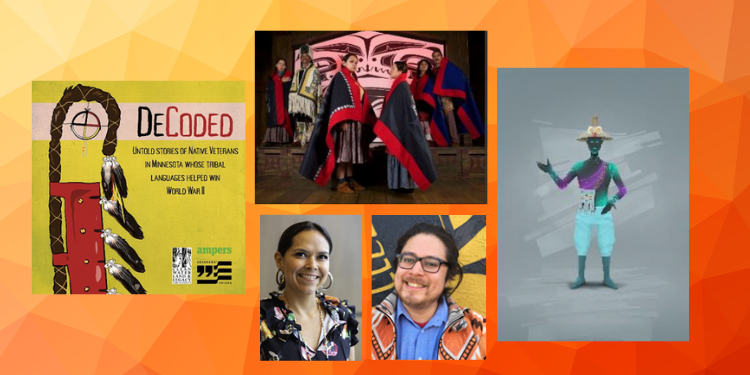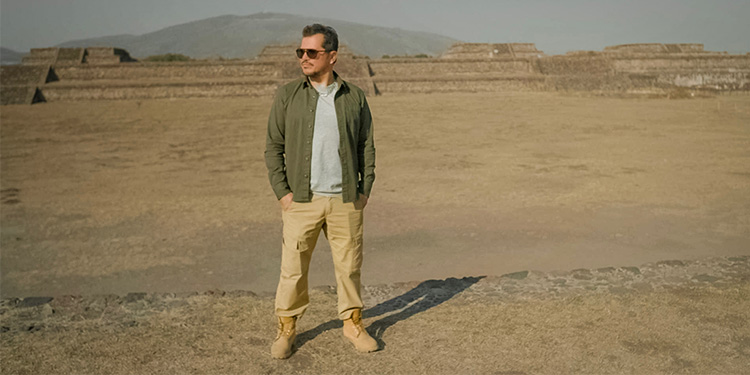September 9, 2020
Through series, specials and ongoing programming, public media puts Latino artists, voters and essential workers in a brighter spotlight this Hispanic Heritage Month, September 15-October 15.
“Voces,” the documentary series produced by Latino Public Broadcasting with support from the Corporation for Public Broadcasting (CPB), premieres September 15 on PBS with the documentary “Building the American Dream.” The film follows Latino laborers in the Texas construction industry who are advocating for safety and equality. “Latino Vote: Dispatches from the Battleground,” a film about the bi-partisan, high-stakes effort to get out the Latino vote this year in battleground states Nevada, Texas, Florida and Pennsylvania, premieres October 6.
[scald=601:sdl_editor_representation] “Latino Vote: Dispatches from the Battleground” covers the effort to get out the Latino vote in Nevada, Texas, Florida and Pennsylvania.Puerto Rican musician Bad Bunny and American farmworkers will be among those honored at "The Hispanic Heritage Awards,” held virtually for the first time and airing October 6 (check local listings) on PBS. The Hispanic Heritage Foundation presents the awards — to Latinos from Latinos — honoring those who have made a positive impact on America and the world.
Four Latino-themed documentaries will premiere on “Doc World,” airing Sunday nights on WORLD Channel, the CPB-supported public television multicast channel airing in more than 70% of TV households.
- “Siqueiros: Walls of Passion” (September 20) profiles Mexican muralist David Alfaro Siqueiros, considered one of the great artists of the 20th century. Siqueiros painted murals in Mexico, the U.S., Cuba, Chile, and Argentina, and fought as a soldier in the Mexican Revolution and the Spanish Civil War.
- “Sands of Silence” (September 27) documents filmmaker Chelo Alvarez-Stehl’s 15-year quest to expose the dark underworld of sexual exploitation and trafficking from Asia to the Americas.
- “Cocaine Prison” (October 4) follows the lives of three indigenous Bolivians who work at the lowest levels of the cocaine trade. From inside a Bolivian prison, a cocaine-worker, a drug-mule and his sister reveal the country’s relationship with cocaine.
- “Border South” (October 11) follows a Nicaraguan migrant trying to cross Mexico into America and a U.S. researcher documenting the remains of others who never made it, exposing the danger and uncertainty of these treks.
Through the CPB-supported journalism project Every 30 Seconds, seven public radio newsrooms across the country are collaborating with the public radio program and podcast, “The World,” to track young Latino voters in the 2020 election cycle. The project, so named because a Latino in the U.S. turns 18 and becomes eligible to vote approximately every 30 seconds, continues weekly reports throughout the month on “The World,” produced by WGBH and PRX. A one-hour special is planned during the last week of October.
Selected segments planned for the public radio program/podcast “Latino USA” during Hispanic Heritage Month demonstrate a wide range of Latino issues and culture:
- “Alzheimer’s In Color” (week of September 11) is a personal essay from journalist Yvonne Latty, whose mother, Ramona, was diagnosed with Alzheimer's disease four years ago. Yvonne documented her mother's illness, as the COVID-19 pandemic closes in on her nursing home in the Bronx.
- “How I Made It: Rosita from 'Sesame Street' ” (week of September 11) interviews "Sesame Street" muppet Rosita and muppeteer Carmen Osbahr about their journey moving from Mexico to "Sesame Street" and bringing the first Latina muppet to the iconic block.
- “How I Made It: The Music of Chicano Batman” (week of September 25) interviews the band from Southern California, whose new album “Invisible People” celebrates diversity and brings hope and unity to everyone. Band members discuss playing with beats and how they were never pigeon-holed as a Latinx/alternative band.
- “Parents Debate Back to School Options Under COVID-19” (week of September 25) will be a roundtable discussion with parents across the country about juggling work and home life during the pandemic and how their states are handling the new school year.
- “Recordings from Illinois” (week of October 2) shares recordings by Lili Ruiz, who decided to leave New York City during the pandemic to go home to be with her close-knit family in Illinois. The family is in touch regularly with "el pueblo," their indigenous community and family members back home in Oaxaca.
“Latino USA” is just one ongoing public media program focused on Latino news, history and culture. Others include the Latin public radio network Radio Bilingue; NPR radio programs/podcasts Alt.Latino and Spanish language podcast Radio Ambulante, which launches its 10th season September 15; WXPN’s biweekly World Café series Latin Roots; PBS cooking show Pati’s Mexican Table; and Tri State Public Radio’s podcast ¿Qué Pasa, Midwest?, which launched through the PRX Project Catapult, a podcasting boot camp with CPB support.
[scald=602:sdl_editor_representation {"link":"","linkTarget":""}]For children 9-13, Timestorm is a historical fiction podcast on TRAX, the PRX podcast network for tweens funded by CPB. Timestorm follows 12-year-old time-traveling twins from Newark, NJ, Alexa and Beni Ventura. The twins visit three continents across five centuries, meeting people who have left their mark on Puerto Rican heritage.
NPR Live Sessions, NPR Music’s video connection to public radio music stations, will build a fresh playlist of videos from Hispanic artists that will appear on LiveSessions.npr.org throughout Hispanic Heritage Month. NPR Live Sessions will also feature some of those videos on the “Live Sessions Song of the Day” embeddable video player, which appears on more than 30 public media websites.
Throughout Hispanic Heritage Month, Latino Public Broadcasting will work with emerging Latino filmmakers to document the impact essential Latino workers are making during the coronavirus pandemic. The "Latinos Are Essential" initiative will produce short video portraits highlighting workers in agriculture, healthcare, service, and education. These videos will be shared through social media with prompts encouraging Latinos to share their own stories of service during the pandemic with the hashtag #LatinosAreEssential.
With longstanding funding to independent filmmakers, journalists and other media producers, CPB strengthens Latino representation and stories within public media. This year, public media received multiple Imagen Award nominations for positive portrayals of Latinos.
Nominated for Best Documentary
- ITVS' "The First Rainbow Coalition"
- CPB-funded "POV: The Silence of Others"
- "VOCES: Porvenir, Texas"
Best Informational Program
- CPB-supported "VOCES: Raul Julia: The World's a Stage"
Best Variety or Reality Show
- "Pati's Mexican Table"
Best Music Composition for Movies or TV
- ·Angélica Negrón on Independent Lens
Top photo: Public radio stations are working with PRX’s “The World” to track young Latino voters through the CPB-supported Every 30 Seconds journalism project, so named because a Latino turns voting age approximately every 30 seconds.
To subscribe to CPB spotlights, press releases, grant announcements and ombudsman reports, go to cpb.org/subscribe.




